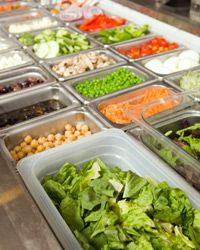It's tough to eat healthy outside your own home. Heck, it's tough to eat healthy even when you cook every meal yourself. Unfortunately, many of the brands we love -- and the places that serve them -- offer up choices with surprisingly high sodium counts.
Over the course of a full day, we should consume no more than 1,500 to 2,400 milligrams (mg) of sodium, according to the U.S. Department of Health and Human Services. How much we actually consume -- on average, 3,436 to 3,712 mg per day, according to Huget -- is another matter entirely. That's more than double the recommended allotment.
Advertisement
Where are we getting all this sodium in our diets? You might be surprised to find out.



